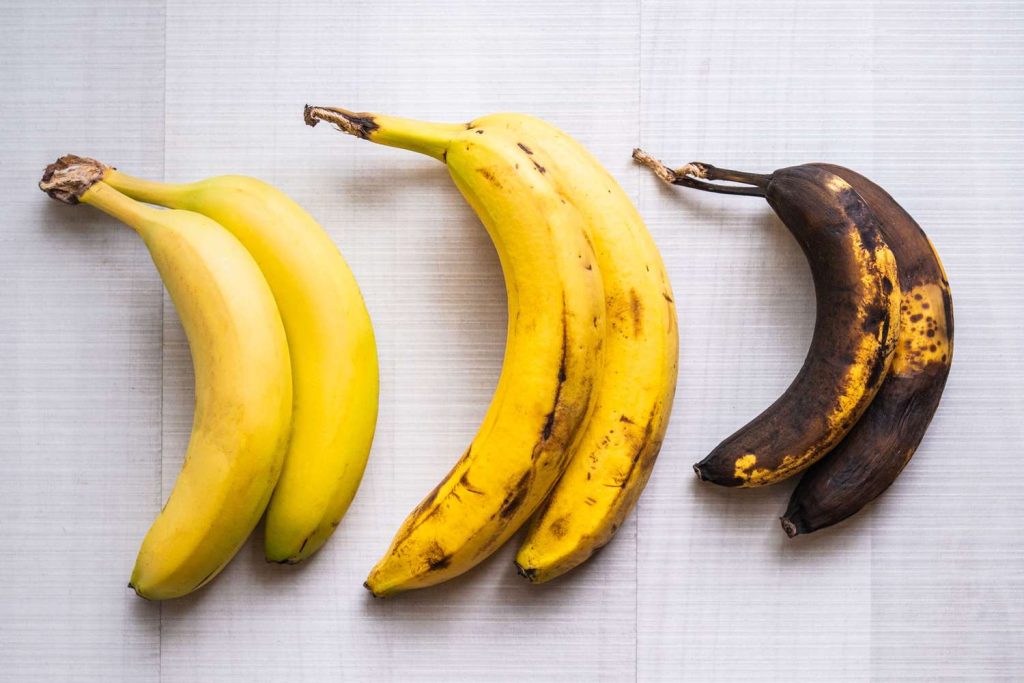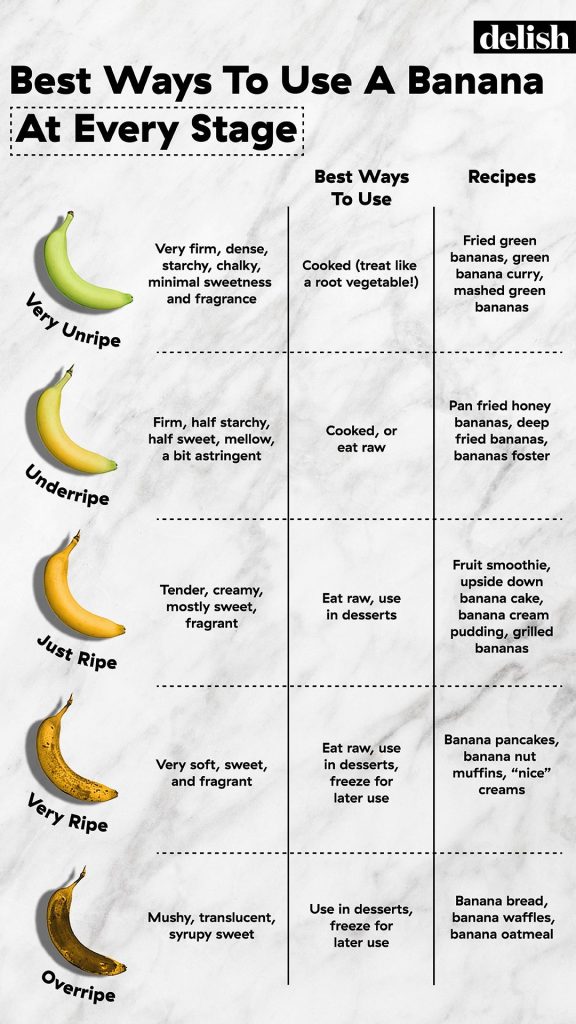Whether you’re making banana bread for a special occasion or just because it’s one of your favorite comfort foods, you know that the ripeness of your bananas is key. Too ripe and your banana bread will be too sweet; not ripe enough and you risk a dry, flavorless loaf. But what is the perfect level of ripeness for bananas used in banana bread? Let’s find out!

Table of Contents
The Sweet Spot for Ripeness
For starters, let’s take a look at what color your bananas should be when you use them for baking. You want the peels to have dark spots or brown streaks all over them. If they’re completely yellow with no freckles or patches of brown, they are not quite ready yet.
On the other hand, if the skin is mostly blackened and beginning to ooze liquid, then those bananas are too ripe. The sweet spot lies somewhere in between—when there is significant spotting on the peel but it still retains its structural integrity (i.e., no oozing). This is when you know that your bananas are perfectly ripe for baking banana bread.
Texture Matters Too
In addition to color, texture also plays an important role in determining when your bananas are ready for baking. You want them to be soft enough that they mash easily when pressed with a fork but firm enough to retain their shape when peeled—think mashed potatoes rather than applesauce consistency.
If the bananas are too hard and unyielding under pressure, then they need more time on the counter before you can use them in baking; similarly, squishy or mushy fruit means that they are past their prime and won’t yield an ideal result in banana bread.
FAQs
What happens if you use unripe bananas for banana bread?
When using unripe bananas for banana bread, the end result will be a dense, heavy loaf that lacks sweetness and flavor.
The color of the loaf may also be darker than usual if unripe bananas are used instead of ripe ones.
Additionally, you may find that your banana bread doesn’t rise as much or have the same texture because unripe bananas don’t contain enough sugar to act as a leavening agent like ripe bananas do.
For best results when baking banana bread, it’s important to use ripe bananas so the dough is sweet and flavorful and the loaf rises properly. Remember to look for brown spots on your bananas before adding them to your recipe!

Do green bananas turn yellow?
Yes, when green bananas ripen, they turn yellow.
This process usually takes around 3-4 days and it’s natural for the banana’s color to change as it matures. The rate of ripening can be affected by several factors including temperature and humidity.
For example, if the air is too humid, the banana may stay greener for a longer period of time; on the other hand, if the air is dry, the banana will most likely turn yellow faster.
Additionally, some varieties of bananas are naturally sweeter when they’re more ripe so keep an eye out for changes in flavor as well!
To speed up the ripening process you can put your green bananas in a paper bag with apples or pears; this traps ethylene gas, which helps the bananas ripen faster.
No matter what method you use, make sure to check your bananas regularly and enjoy them when they’re just right!
Read more: How To Make Banana Bread Without Baking Soda? Substitutes And Recipe
Can a banana be too ripe for banana bread?
Yes, a banana can be too ripe for banana bread.
When bananas become overripe, they have a mushy texture and will not provide the same structure or flavor to your bread that a ripe banana would.
Overripe bananas contain more sugar, which can lead to an overly sweet loaf of bread. Additionally, when the sugars break down in overripe bananas, it produces too much liquid and causes the bread to be dense and gummy.
To avoid these issues, use only slightly-overripe bananas for your banana bread recipes – usually those with brown spots on them but still firm enough that you can peel them without difficulty. Doing this will ensure that your banana bread is flavorful and has a light, fluffy texture.
What to do with leftover banana bread?
There are many delicious and creative ways to use up leftover banana bread. One option is to make French toast with it – cut thick slices of the bread, dip each slice in a mixture of eggs and cream, then fry them in butter until golden brown. To add extra flavour, you can sprinkle some cinnamon or nutmeg on the egg-bread mixture.
Another way to use leftover banana bread is to turn it into a decadent breakfast parfait. Layer small pieces of the banana bread with your favourite yogurt, nuts and fruits in a bowl or jar for a nutritious start to the day.
You could also crumble up the leftover banana bread and top it over oatmeal, pancakes or waffles for a crunchy, sweet and healthy breakfast.
For an indulgent treat, try dipping banana bread in melted chocolate or making banana bread pudding with your leftovers.
If you’re not a fan of sweet dishes, a savoury version can also be created – grab some shredded cheese and turkey bacon to top the banana bread slices, then bake until the cheese is melted and bubbling. For a healthy snack, spread some peanut butter over pieces of banana bread for an energy-rich snack.
Finally, why not toast some thick slices and top them with your favourite jam or honey for an afternoon pick-me-up?
Conclusion
When it comes to making delicious banana bread, finding just-right ripeness in your fruit is essential. Aim for peels with plenty of dark spots or streaks on yellow skin that give way easily under gentle pressure from a fork but keep their shape as you peel them off. With this knowledge in hand, you’ll never have to worry about subpar banana bread ever again! Now get out there and start baking!
References:
http://mymedr.afpm.org.my/publications/46329









